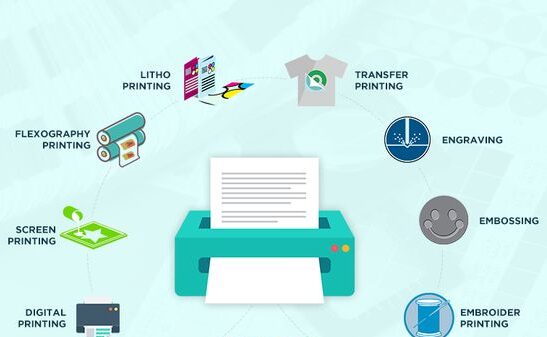How to Start a T-Shirt Printing Business
So, you’re thinking about starting a t-shirt printing business? Great choice! The t-shirt printing industry is booming, offering creative freedom and a potentially lucrative income stream. But like any business, it requires careful planning and execution. Let’s dive into the essentials of starting your own t-shirt printing venture.
Understanding the Market
Researching the Target Audience
Before you start printing, you need to know who you’re printing for. Are your potential customers young adults, sports teams, or corporate clients? Identifying your target audience will help tailor your designs and marketing efforts.
Analyzing Competitors
Check out what other t-shirt printing businesses are doing. Analyze their strengths and weaknesses. What are their best-selling designs? What marketing strategies are they using? This research can provide valuable insights and help you carve out your niche.
Identifying Trends in T-Shirt Designs
Stay ahead of the curve by keeping an eye on current design trends. Whether it’s minimalist designs, vintage logos, or custom artwork, understanding what’s popular can guide your creative process and attract more customers.
Planning Your Business
Defining Your Business Model
Are you planning to sell custom-designed shirts directly to consumers, or are you aiming to provide bulk printing services to businesses and organizations? Define your business model early to streamline your operations and marketing strategies.
Creating a Business Plan
A solid business plan is your roadmap to success. Outline your business goals, target market, budget, and marketing strategies. This plan will not only guide you but also help secure funding if needed.
Setting Realistic Goals and Milestones
Set achievable goals and milestones to keep your business on track. Whether it’s reaching a certain number of sales per month or expanding your product line, having clear objectives will keep you motivated and focused. Also, read about the Pet Sitting Business
Legal Considerations
Registering Your Business
First things first, you need to register your business. Choose a suitable business structure—whether it’s a sole proprietorship, partnership, or LLC—and get the necessary permits and licenses.
Understanding Permits and Licenses
Ensure you understand all the legal requirements for operating a t-shirt printing business in your area. This might include zoning permits, health and safety regulations, and more.
Trademarking Your Designs
Protect your unique designs by trademarking them. This prevents others from copying your work and helps build your brand identity.
Choosing the Right Printing Method
Screen Printing
Screen printing is a popular choice for its durability and vibrant colors. It’s cost-effective for large orders but requires a bit of a learning curve.
Direct-to-Garment (DTG) Printing
DTG printing is ideal for small orders and complex designs. It offers high-quality prints with a wide color range but can be more expensive per unit.
Heat Transfer Printing
Heat transfer printing is versatile and great for beginners. It allows for intricate designs and is relatively simple to learn.
Sublimation Printing
Sublimation printing is perfect for all-over designs and works well with polyester fabrics. It offers excellent color retention and durability. Discover more information dynamichub.ca
Equipment and Supplies
Essential Equipment for T-Shirt Printing
Invest in quality equipment such as a heat press, screen printing setup, or DTG printer. Ensure you have all the necessary tools for your chosen printing method.
Sourcing Quality T-Shirts
Choose high-quality, comfortable t-shirts to print on. Your customers will appreciate the quality and be more likely to make repeat purchases.
Choosing Inks and Other Supplies
Select the right inks for your printing method. Each type of printing has specific ink requirements, so do your research to ensure the best results.
Setting Up Your Workspace
Home-Based vs. Commercial Space
Decide whether you’ll operate from home or rent a commercial space. Home-based businesses are cost-effective but might limit your production capacity.
Organizing Your Workspace for Efficiency
A well-organized workspace enhances productivity. Ensure your equipment, supplies, and finished products are neatly arranged for easy access.
Safety Considerations
Prioritize safety in your workspace. Follow all safety guidelines, use protective equipment, and ensure proper ventilation if working with chemicals.
Designing Your T-Shirts
Creating Unique and Marketable Designs
Stand out from the competition with unique and appealing designs. Research popular trends and consider what will resonate with your target audience.
Using Design Software
Utilize design software like Adobe Illustrator or CorelDRAW to create your designs. These tools offer a range of features to help bring your ideas to life.
Hiring a Graphic Designer
If design isn’t your strong suit, consider hiring a graphic designer. A professional can help create eye-catching designs that attract customers.

Pricing Your Products
Calculating Costs
Understand your costs, including materials, labor, and overheads. This ensures you set prices that cover your expenses and generate profit.
Setting Profitable Prices
Research market rates and set competitive yet profitable prices. Consider your target audience’s willingness to pay and the perceived value of your products.
Offering Discounts and Promotions
Attract customers with discounts and promotions. Limited-time offers, bulk order discounts, and holiday sales can boost your sales and customer base.
Marketing Your Business
Building a Brand Identity
Develop a strong brand identity with a memorable name, logo, and tagline. Consistent branding helps build recognition and trust among your customers.
Utilizing Social Media
Leverage social media platforms like Instagram, Facebook, and Twitter to showcase your designs, run promotions, and engage with your audience.
Creating an Online Store
Set up an online store using platforms like Shopify or Etsy. Ensure your website is user-friendly and optimized for mobile devices.
Participating in Local Events and Markets
Expand your reach by participating in local events and markets. This provides an opportunity to showcase your products and connect with potential customers.
Sales and Distribution
Online Sales Channels
Utilize online sales channels to reach a broader audience. Platforms like Amazon, eBay, and your own website can help increase your sales.
Retail Partnerships
Form partnerships with local retailers to stock your t-shirts. This can boost your brand’s visibility and increase sales.
Shipping and Fulfillment
Ensure you have a reliable shipping and fulfillment process. Timely deliveries and proper packaging are crucial for customer satisfaction.
Customer Service
Providing Excellent Customer Support
Offer top-notch customer support to resolve issues promptly. Happy customers are more likely to become repeat buyers and refer your business to others.
Handling Returns and Complaints
Have a clear return policy and handle complaints professionally. Satisfied customers are key to your business’s success and reputation.
Building Customer Loyalty
Reward loyal customers with discounts, special offers, or a loyalty program. Building strong relationships with your customers can lead to long-term success.
Scaling Your Business
Expanding Your Product Line
Consider expanding your product line to include other apparel or accessories. This can attract a wider audience and increase sales.
Hiring Staff
As your business grows, you might need to hire staff to help with production, sales, and customer service.
Increasing Production Capacity
Invest in more equipment and streamline your processes to increase production capacity and meet growing demand.

Staying Ahead of the Competition
Keeping Up with Industry Trends
Stay updated with the latest industry trends and innovations. This helps you stay competitive and relevant in the market.
Continuous Learning and Improvement
Never stop learning and improving your skills. Attend workshops, online courses, and industry events to stay ahead.
Innovating Your Business Model
Innovate your business model to offer unique value to your customers. Whether it’s new designs, better printing methods, or improved customer service, always strive to improve.
Conclusion
Starting a t-shirt printing business can be an exciting and rewarding venture. By understanding the market, planning meticulously, and continuously improving, you can build a successful business that stands out in the industry. Remember, every big success story started with a single step. So, take that step today and begin your journey to entrepreneurial success!
FAQs
What is the most cost-effective printing method for beginners?
Heat transfer printing is often considered the most cost-effective method for beginners due to its low startup costs and ease of use.
How can I create unique designs if I’m not a graphic designer?
You can use design software with templates or hire a freelance graphic designer. There are also online platforms that offer affordable design services.
What are the common mistakes to avoid in t-shirt printing?
Common mistakes include using low-quality materials, neglecting market research, and underpricing your products. Ensure you have a solid plan and invest in quality supplies.
How can I attract my first customers?
Start by leveraging social media, offering discounts, and participating in local events. Word of mouth and online marketing can also help attract initial customers.
Is it possible to run a t-shirt printing business part-time?
Yes, many people start t-shirt printing businesses part-time. It allows you to test the waters and build your brand without quitting your day job.


